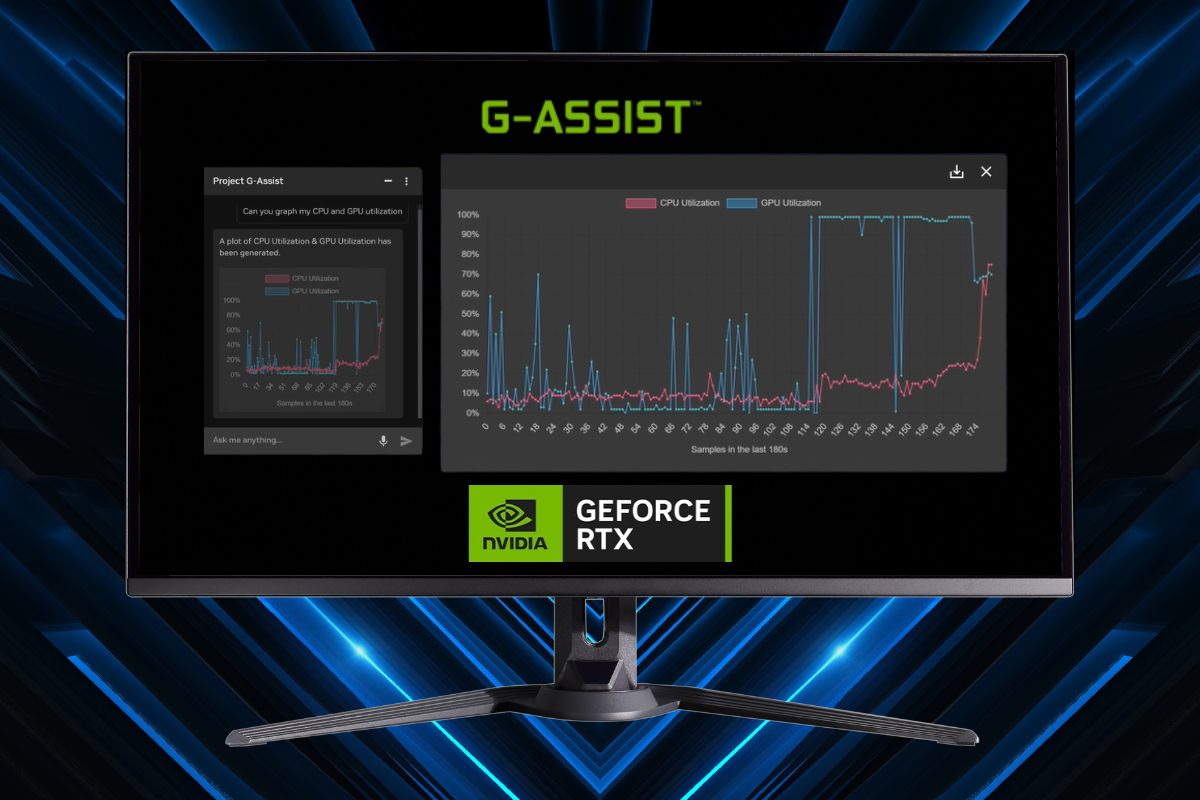NVIDIA has unveiled a significant enhancement to Project G-Assist, enabling users of GeForce RTX AI PCs to extend their AI assistant’s capabilities through custom-built plugins. This development allows for natural language interaction with PCs, marking a major advancement in personalised AI computing technology.
The innovative Project G-Assist operates by utilising a third-party Small Language Model (SLM) that runs locally on GeForce RTX GPUs. This local processing ensures quick response times and maintains functionality even without internet connectivity. Users can access G-Assist through NVIDIA’s official application, which provides comprehensive control over system settings, game configurations, and peripheral management.
At the heart of this advancement is the new plugin architecture, which empowers developers to interact with, or control AI-powered GPU and system features through C++ and Python. It’s more about accessing or using these features in an application. This framework opens up possibilities for extensive customisation and integration with various PC functions, from basic system controls to advanced AI model interactions.
Revolutionary Features and Implementation
The system’s architecture prioritises user privacy and performance by processing all AI operations directly on the GeForce RTX GPU. This approach eliminates the need for cloud-based processing, ensuring faster response times and enhanced data security. The integration of voice and text commands simplifies system management, allowing users to control everything from game settings to peripheral device configurations seamlessly.
G-Assist’s plugin ecosystem represents a significant step forward in customizable AI assistance. Developers can create specialised plugins that expand the system’s capabilities, potentially enabling integration with smart home devices and advanced AI models. This open approach to development encourages community participation and innovation.
Technical Infrastructure and Capabilities
The implementation of G-Assist incorporates robust language processing capabilities in a compact format designed for local execution. This solid technical foundation allows G-Assist to offer advanced AI functionality while ensuring efficiency and responsiveness within the system.
User interaction with G-Assist has been streamlined through intuitive voice and text commands, making complex system operations more accessible to the average user. The system can optimise performance settings, manage peripheral devices, and adjust gaming parameters based on user preferences.
Future Implications and Development
The introduction of the plugin builder represents a crucial step toward more personalised and efficient PC management. As the technology evolves, users can expect increasingly sophisticated integration options and expanded functionality. The growing developer community around G-Assist suggests a future rich with innovative applications and enhanced user experiences.
This advancement in AI-driven system management positions NVIDIA at the forefront of personal computing innovation, promising a future where interaction with computer systems becomes more natural and intuitive. The technology’s potential impact extends beyond gaming, potentially transforming how users interact with their computers across various applications.
News Source: https://blogs.nvidia.com/?p=80064








